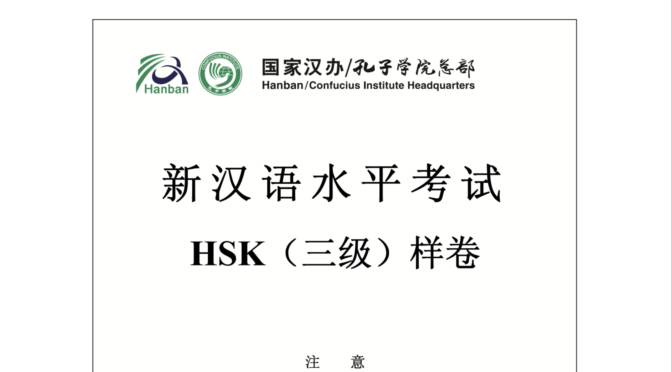The month of May saw me finish the textbook for the HSK 3 course. In total it took three months to finish 20 units, or about 110 hours, roughly. Here’s a screenshot of my spreadsheet tracking my progress:
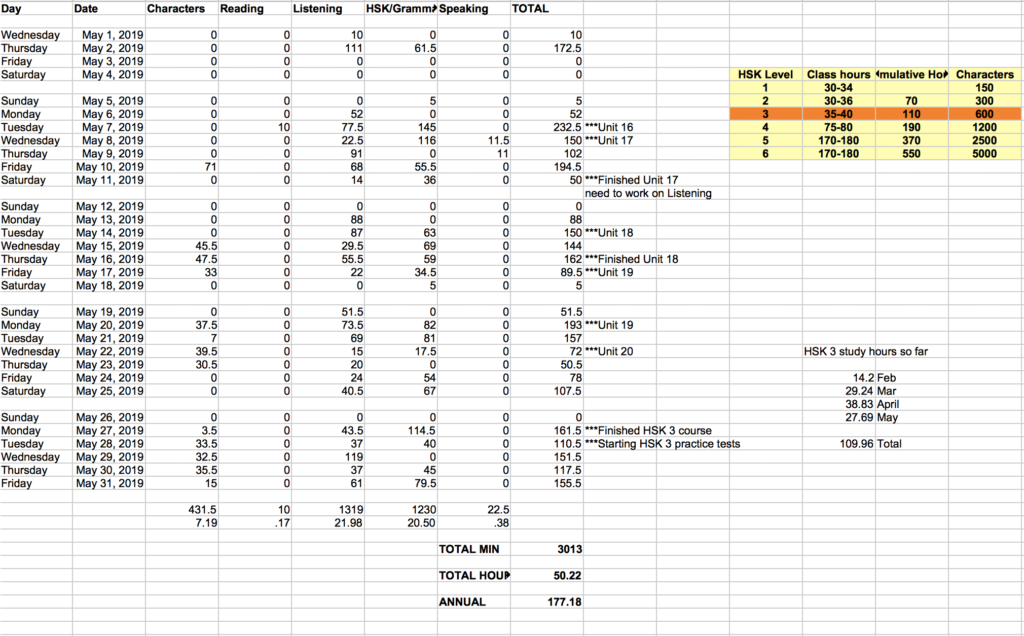
You’ll see I re-started writing Chinese characters about midway through May, but those were HSK 3-specific. You’ll recall I was working through a different character book for much of the last few months and, although that book was helpful, I still need to work on the HSK 3-specific characters because they are required to pass the test, especially for the written section of the test.
The HSK 3 level introduces quite a few grammar points only some of which were easy. Since I’m doing this on my own, I have found that understanding what’s going on grammar-wise can be difficult, though I’ve talked to other people who have said the same thing about the clarity of the course books. I’m not beating myself up too much about it, but it is an area I’ll need to work on. To supplement my HSK 3 course work, I also bought a grammar reference book and another course book on the grammar itself, so I can pick through those as needed.
In addition to the course work, I’ve also been listening to quite a bit of Chinese podcasts and music (hip hop, mostly) and trying to read as much as I can. A friend also gave me a bunch of movies to watch (all Chinese), some with subtitles and others without. My goal for the next month is to make my way through at least 15 movies and read at least one comic book in Chinese (the Kwai Bao book I posted about before). I’ll also try to write a short summary of each movie and chapter I read, which will probably be rife with errors. And that’s okay.
Overall, I’ve found that my reading and writing have improved quite a bit but my listening and speaking are lagging quite a bit, though I find myself using a larger vocabulary when I do actually speak. I was complimented on my character writing by one of the Chinese teachers I met, she even took a photo of my writing notebook to show her students.
And so, having finished the course work, I have started doing practice tests to see if it’s worth my while to sign up for the test.
So what does the test look like? Well, here is a look:
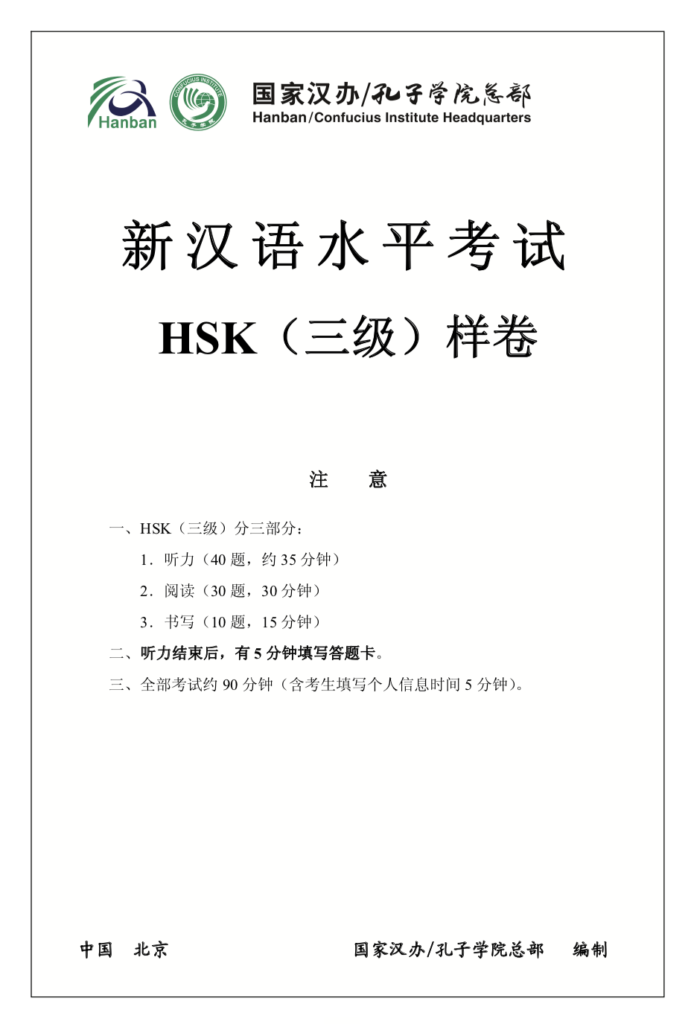
The whole test comprises of three sections:
- Listening (ting li 听力) – 35 minutes
- Reading (yue du 阅读) – 25 minutes
- Writing (shu xue 书写 – 15 minutes
Followed by 10 minutes to transfer your answers to the answer sheet. The whole test runs for 90 minutes.
Below is a section-by-section look at the test:
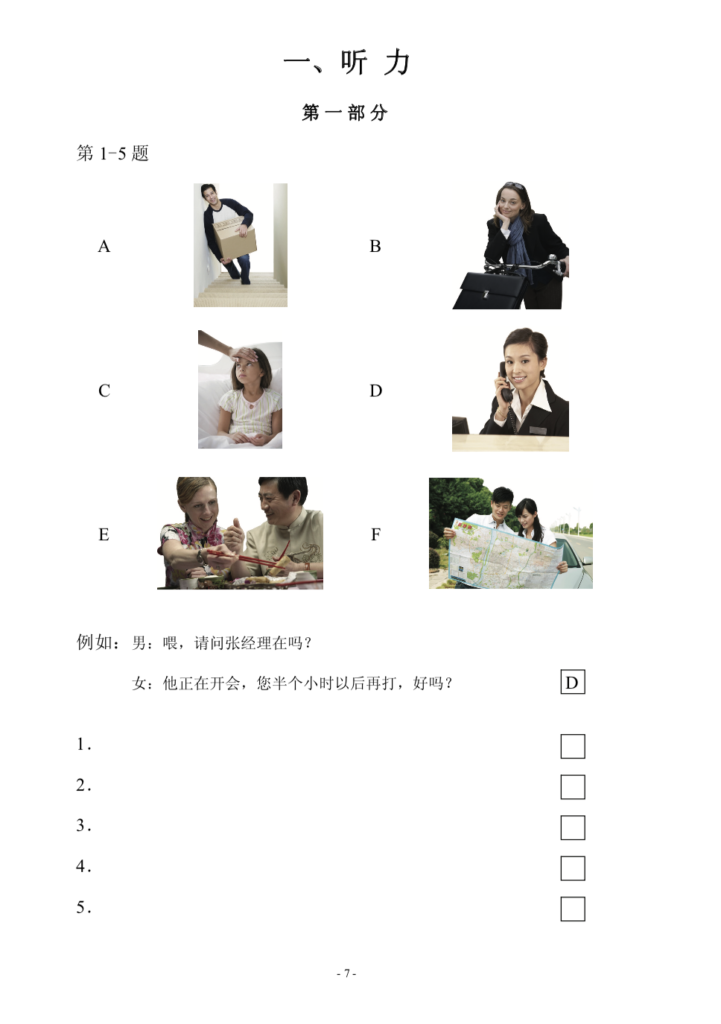
The first section, listening to the audio file and putting the right letter into the box. Not all too difficult but sometimes the connection between the picture and the audio file is tenuous. For example, “How are you? I’m happy. Why? Because I’m moving.” Which you have to associate with the picture for letter A, because he is holding a box and that implies moving homes. Not B (moving companies?), D (real estate agent?), E (we’re moving!), or F (we’re on the move!). It sounds strange but when you hear some of the audio files you have to think what would normally be the case.
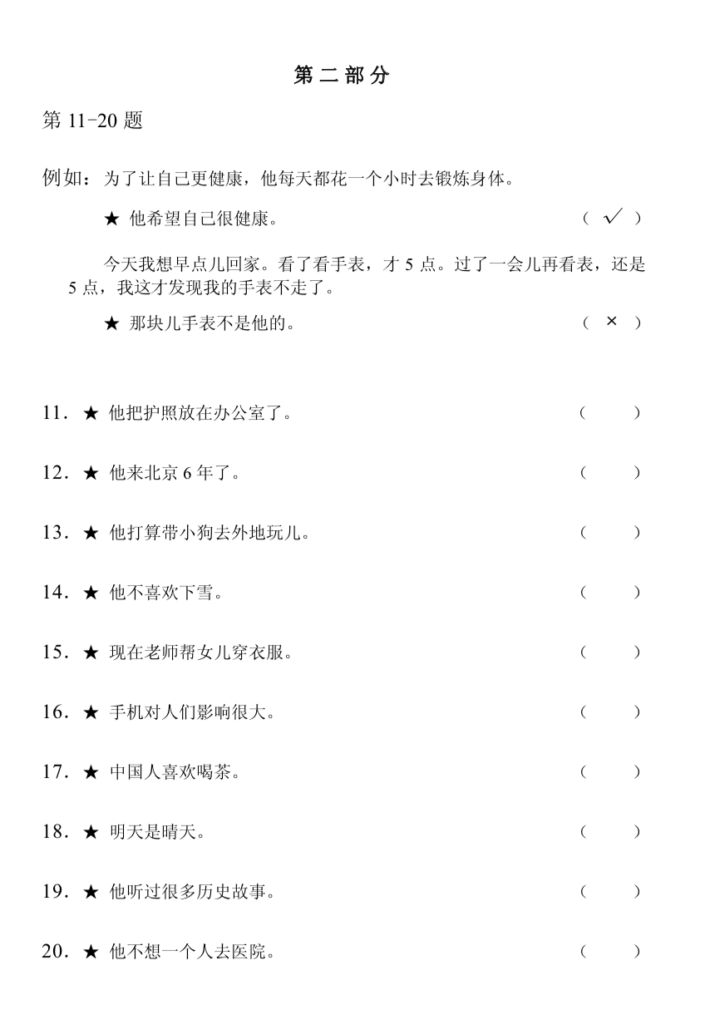
Section two of the listening part, listen to the short dialogue and choose whether or not the statement is true or false. This is where my score starts to plummet. It’s often the case that I can understand the words but I can’t understand the idea being conveyed, and I’m struggling to figure out how to solve this issue.
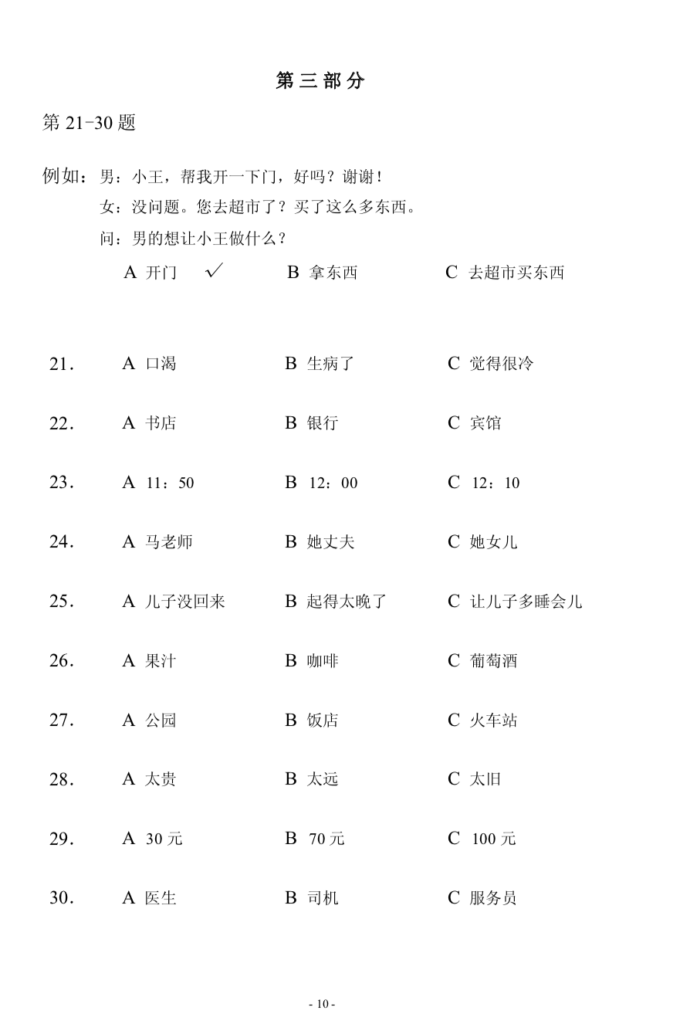
Section three of the listening part involves listening carefully to the longer dialogues, understanding the question asked (which is not written down in this section), and then being able to read the characters and select the correct response. Sometimes the questions are easy, but sometimes they can be tricky, especially when they talk about the time (Question 23) or talking about discounts and things of that nature (Question 29), both of which require an understanding of how Chinese relates those numbers (which is slightly different from how they’re related in English).
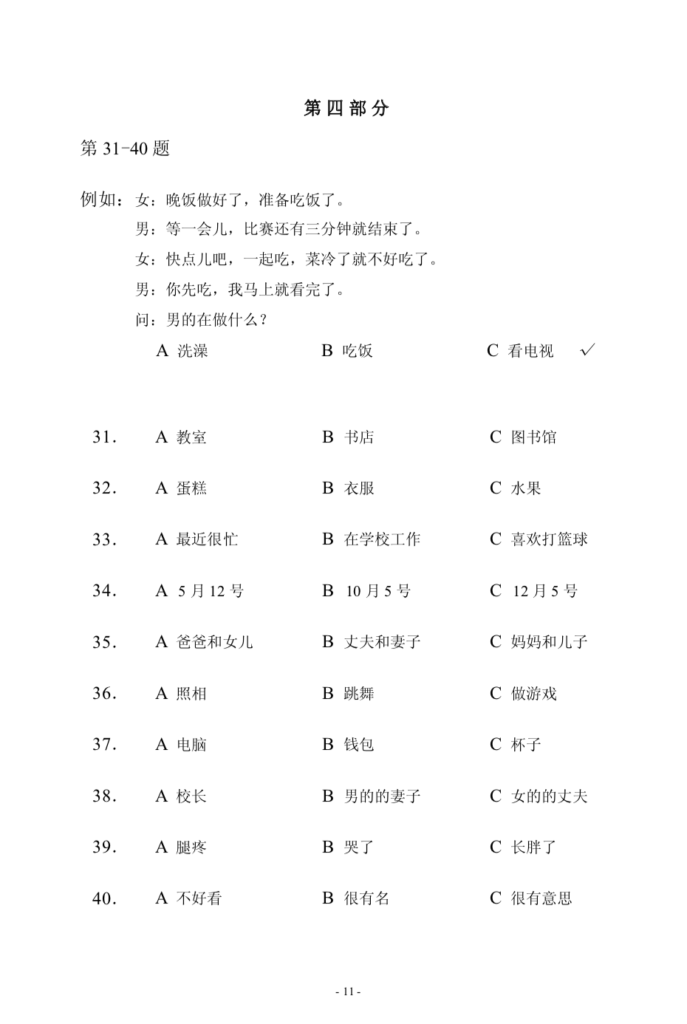
The last section of the listening part is much like part three but the dialogues are longer. Again, my score usually drops here.
Moving onto the next section of the test, it’s the Reading part, most of which is pretty easy as long as you are able to pick out one or two of the answer you definitely know, then you can use the process of elimination to figure out the rest. See for yourself:
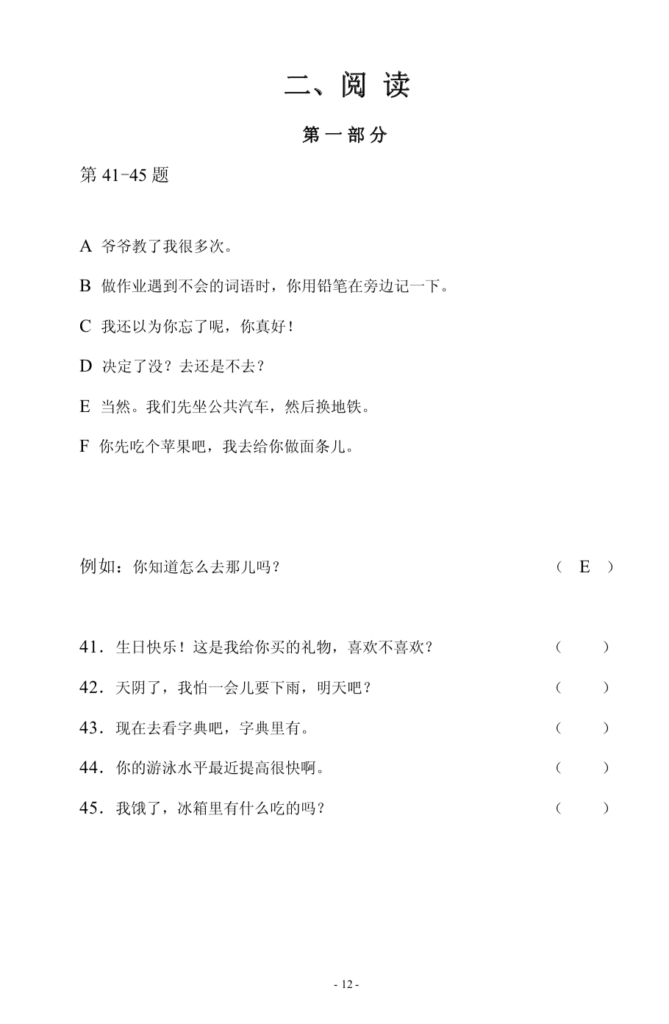
The first section requires matching the sentences. The language isn’t overly difficult but with no pinyin (English letters), you can see how you need to be able to recognize the characters and at least most of what the sentence means. This section can be made easier by finding each sentence with the corresponding character. For example, Question 45 and Letter F both have the character for eating, 吃, so, without really knowing what the rest is about (Q45 guy is hungry, Letter F person is eating an apple), you can match them and move on to the next question.
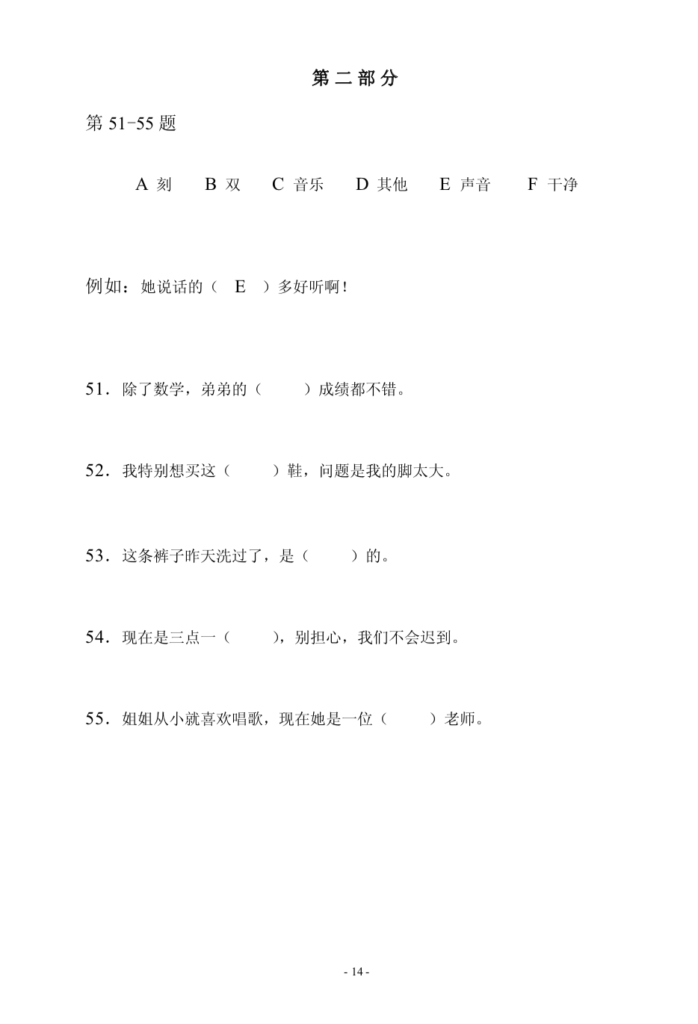
Part two of the Reading section involves filling in the blanks which, again, can be made easier if you recognize certain phrases or situations. For example, Question 54 looks to be talking about numbers. A look through the possible words to fill in and you’d be left scratching your head a little but, in recognizing that one lesson about time you might remember “a quarter of an hour”, which is 一刻, yi ke. Further, for Letter C, it’s yin yue, music, so you’d be looking for something that deals with sound, maybe ting 听 but could be something else, which we find in Question 55, chang ge 唱歌, and thus another one is done.
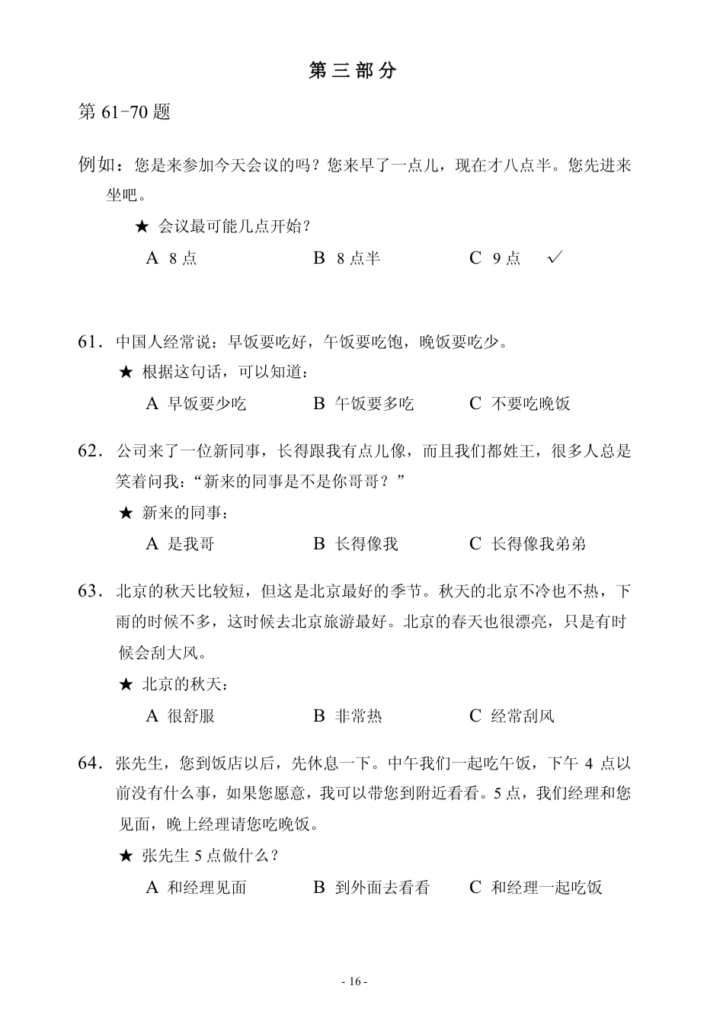
Part three gets a little bit more tricky and the “hacks” to get through parts 1 and 2 don’t really work here. This part involves reading through the statement, then the question, then selecting the correct answer, all of which incorporate some part of the statement given. The time it takes to read the question alone can take a minute or two and then you often have to re-read the question once you read through the possible answers.
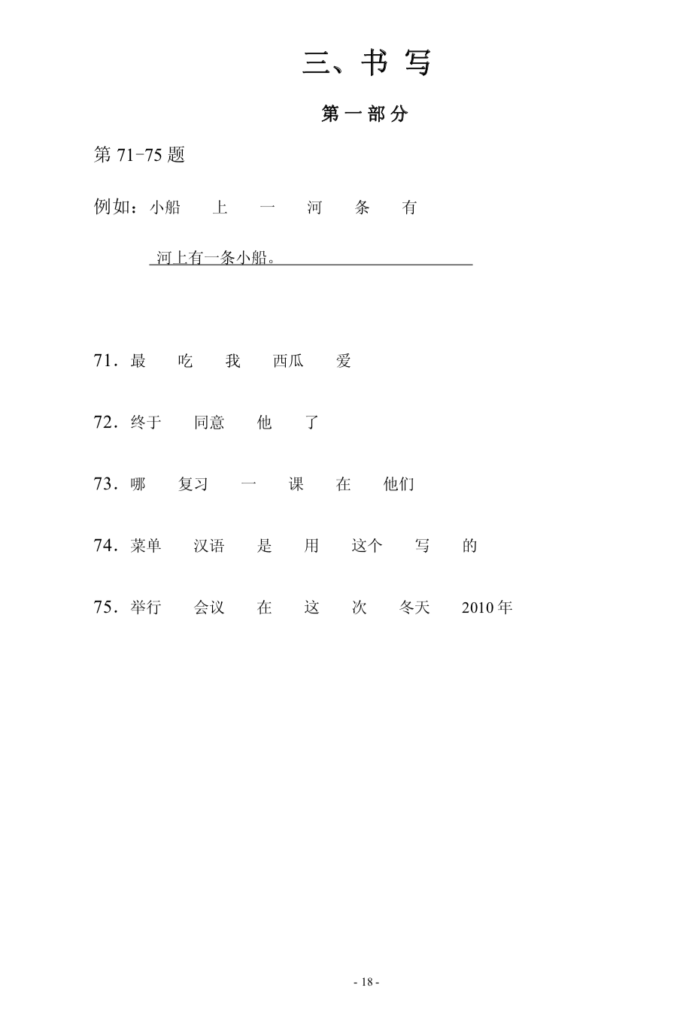
Entering into the Writing section and now we’ve got everything we need right in front of us… except for the fact that we have to put it in the right order. I usually only score one or two correct in this section. As you can see, the sentences get longer and a bit more complicated. It helps if you’ve been doing extra-curricular reading so you might be more familiar with how the Chinese language structures its sentences. It also helps if you’ve understood the grammar points introduced throughout the course (of which I’d say I understood about half).
Now if you’re wondering if you have to actually write these characters by hand, you don’t, since the test can be taken online through a computer. That means you need to be able to type the pinyin for the word and recognize which character it is and not worry about having to write all of the little strokes involved in many of the Chinese characters. But, you can take a paper test in which you would need to write the characters down, and that can get messy if you make a mistake.
And that’s the end of the test! You need a minimum of 60% to be given a certificate, and so far I’ve been consistently scoring between 65-75%. Not bad, but I know where I can do better. The certificate is valid for two years from the time of the test in case you want to enter into a Chinese university, otherwise the certificate is valid for life.
So, will I take the test?
Some people say to take it just to try it out, others say it’s not worth it until you get to a higher level, such as HSK 4. I’ll let you know at the end of the month what I’ve decided. What I might do is start the HSK 4 books and then go take the level 3 test just so I can be sure my level is higher than what is needed. Anyway, onto those movies and books!
